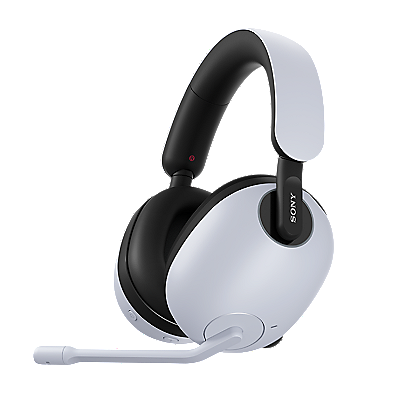Home Theatre - HDMI
Before Connecting
A/V Receiver is a typical component within Home Theatre System. The basic functionality is to receive and amplify an audio signal and allow it to pass through the video signal from other A/V devices to the TV.
Making a Connection
HDMI cable
- : Antenna cable
- : HDMI cable with ARC (Audio Return Channel)
If your Home Theatre System, TV, and the HDMI cable support ARC, it
means the TV can transmit sound to Home Theatre System. When you
connect the TV to the Antenna/Cable directly (without Set Top Box), it
will allow you to hear the TV sound through speakers connected to Home
Theatre System.
If you are using Set Top Box, you will need to output the sound from Set Top Box to Home Theatre System.
When connecting a BRAVIA Sync-compatible digital audio system with
Audio Return Channel (ARC) technology, find the HDMI jack (socket) that
carries the ARC mark (HDMI IN 1 or HDMI IN 2, depending on your
model/ region/ country) and connect to it with an HDMI cable. However,
if connecting a system that is not BRAVIA Sync-compatible or ARC capable, an additional audio connection via DIGITAL AUDIO OUT (OPTICAL) is necessary.
If connecting a system that is not compatible with Control for HDMI or ARC, an additional audio connection is necessary:
HDMI + Optical Audio cable
- : Antenna cable
- : Audio cable (optional) - Optical Audio cable
- : HDMI cable
HDMI + Mini-plug audio to RCA cable
- : Antenna cable
- : Audio cable (optional) - Mini-plug to RCA/Composite Audio cable
- : HDMI cable
This connection will transfer analogue audio, so the quality is lower than when you use Optical audio cable.
TV Set-up
- After making a connection, turn on the TV and Home Theatre System.
- Press the
(Input) button repeatedly to select the input to the connected Home Theatre System.
- For audio connection, open the
Settings screen. How to access the Settings
The next steps will depend on your TV menu options:- Select Display & Sound → Audio output → Speakers → Audio system.
- Select Sound → Speakers → Audio System.
- The connected audio system is turned on automatically. The volume can be controlled using the TV's remote.
If you connect a BRAVIA Sync-compatible device, you can control it by simply using the TV's remote.For HDMI ARC and Optical audio connection, You need to configure the Digital audio output or Digital Audio Out settings according to your audio system:- To access Digital Audio Out settings, open the
Settings screen. How to access the Settings
The next steps will depend on your TV menu options:- Select Display & Sound → Audio output → Audio system settings → Digital audio output.
- Select Display & Sound → Audio output → Digital audio output.
- Select Sound → Digital Audio Out.
- Select Auto or PCM (Select Auto if the device connected via DIGITAL AUDIO OUT (OPTICAL) is compatible with Dolby Digital. Select PCM if the device is not compatible with Dolby Digital).
- To access Digital Audio Out settings, open the
Troubleshooting
Please note that this is just basic troubleshooting based on Sony
latest TV models. You can check specific troubleshooting for your model
on the Help Guide, i-Manual, or operating instructions.
If the symptom still persists, please contact Sony.
- No audio or low audio when connected to audio system
-
- Ensure proper connection and both TV and Home Theatre System are on.
- Ensure proper input settings for both TV (see above TV Setup) and Home Theatre System.
- If your TV has following setting menu items, make sure the settings are set as below:
Note: The steps below are an example.
- Speakers: Audio System.
Select Settings → Display & Sound → Audio output → Speakers → Set to Audio system. - Headphone/Audio Out: Audio Out.
Select Settings → Sound → Headphone/Audio out → Set to Audio out (Fixed). - Audio Out: Fixed.
- Speakers: Audio System.
- If the audio system is not compatible with Dolby Digital or DTS, set Digital audio output to PCM. The steps below are an example:
Select Settings → Display & Sound → Audio output → Audio system settings → Set Digital audio out to PCM.
If Audio system settings is not shown, skip this step. - Check if the TV's Digital audio out volume setting is at maximum. The steps below are an example:
Select Settings → Display & Sound → Audio output → Audio system settings → Optical digital audio output volume.
If Audio system settings is not shown, skip this step. - When using HDMI input with Super Audio CD or DVD-Audio, DIGITAL AUDIO OUT (OPTICAL) may not provide an audio signal.
- If there is still no audio, slightly increase the television volume.
- If there is still no audio, slightly increase the volume level on the Home Theatre System.
- No picture appears on the TV screen when connected to the home theatre system via HDMI.
-
For some 2014 TV models (i.e. KDL-xxWxxxB Series), there is Problem Diagnosis feature that may detect connected device symptom: Press HOME button on the remote → Help → Customer Support → Problem Diagnosis: External Device Symptom.
Please check the following:
- Is the HDMI cable connected correctly?
- Is the HDMI input selected on TV?
- If a resolution setting unacceptable to your TV is mistakenly selected, you can reset it to the factory default. In this case, press STOP button on the player for more than 10 seconds to reset the video output resolution to the lowest resolution.






















